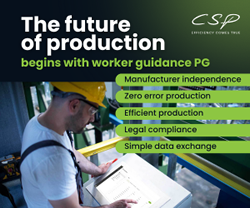As California Rolls Out More Solar Power, Regulators Could Undercut The Industry
UK - It could be lights out for solar power under this government
Cloaking Principle Could Boost Solar Cell Performance
SolarCity claims highest efficiency solar panel
Renewable Energy Surpasses Coal in the UK
Can the U.S. Jump-Start Offshore Wind Power?
Balls of DNA Could Fix Geothermal Energy's Biggest Problem
Balls of DNA Could Fix Geothermal Energy's Biggest Problem
Researchers develop cool way to improve solar cell efficiency
Wind turbine technology stores excess wind power for when gusts turn to breezes
El Niño Buffers U.S. Wind Power Dreams
SPI 2015: Tax credit sunset preoccupies a fast-maturing industry
Obama pledges $120M toward solar power, clean energy
Solar Power International 2015 underway in Anaheim, CA
California's First Commercial Solar Desalination Plant Offering Shares Through DPO
Records 1291 to 1305 of 2275
First | Previous | Next | Last
Featured Product

